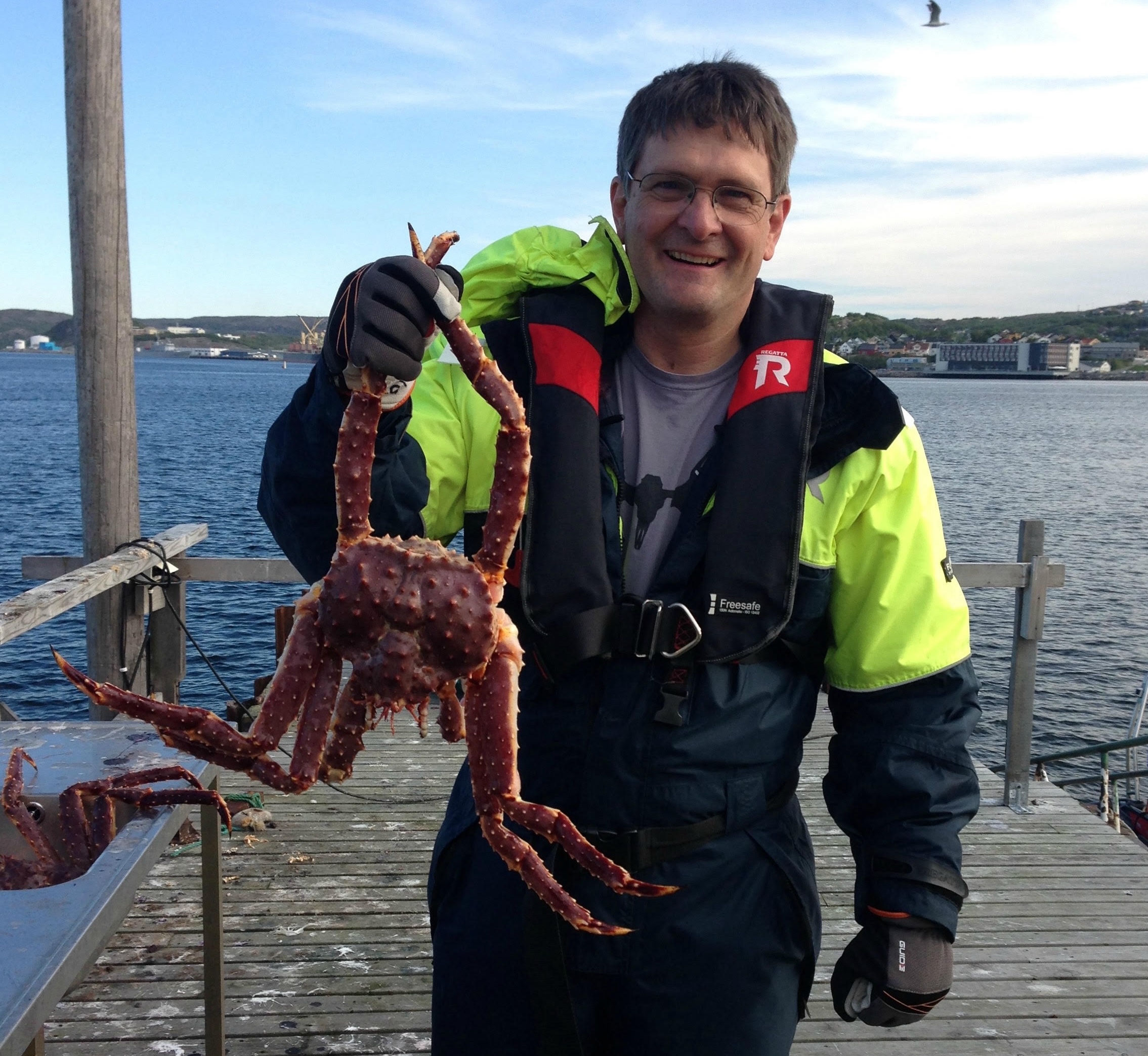The North Cape—the northernmost point in Europe, where Norway and Russia meet in the remote Barents Sea—bristles with spy ships and fighter jets. Yet a quiet invasion is happening beneath the surface of the sea.
That incursion is at once delicious, highly lucrative, and ecologically disastrous: Alaska king crab on the wrong side of the planet. Their relocation here dates back to the Cold War and is as vexing as any geopolitical struggle.
First, let’s review geography. North Cape is about as far north as you can go without a boat in Europe. It’s at roughly the same latitude as Pt. Barrow, Alaska, the northernmost point in the United States. The landscape is cliffy coastlines and plateaus of tundra dotted with glacial ponds and grazing reindeer.
The coastal climate in the Norwegian far north is milder than northernmost Alaska because of the North Atlantic Current. Those oceanic conditions also created an enormously productive fishery—a cod harvest that has fed people across Europe for centuries.
Norway is deeply skeptical of its neighbor, Russia. As part of NATO, Norway participates with American and European allies, keeping a close eye (and an electronic ear) on Russia, a practice that has only increased since Russia invaded Ukraine in 2022. But another point of conflict has arisen around the introduced population of Alaskan king crab. (Which are technically called red king crab.)
Red king crab are native to the northern Pacific: Alaska and Russian lands like the Kamchatka Peninsula along the Bering Sea. These crabs are enormous and delectable. North Pacific red king crab populations have long suffered from a mysterious mix of of commercial harvest, ecological changes and rising ocean temperatures.
Back in the 1930s, when Stalin ran the Soviet Union with his notoriously iron fist, the Soviet government came up with the idea of transplanting Alaska king crab from the northern Pacific to the Atlantic. In the 1960s, Soviet scientists transplanted thousands of Alaskan king crab 11 time zones over to the east in the Barents Sea.
As so happens with playing god with ecosystems, things did not go as planned. Yes, the crabs did very well, growing enormously both in size and number. It’s not unusual to find a 25-pound crab today, with their legs spanning five feet, in the Barents Sea. (Today, in the Bering Sea, a six-pounder is considered big.)

First, the giant crabs taking over their new home fouled the gear of the traditional cod fishermen. Second, the crabs scoured the sea floor of small organisms of the sea floor. Creatures like scallops and mussels which are the basis of the food chain, had no natural defenses against the giant crabs. Because of these ripples through the food chain, invasive crabs become one more problem for already stressed Atlantic cod fisheries.
So Norway faces a dilemma, albeit a delicious one. With their salty, slightly sweet white, flaky flesh, the crabs are highly valuable in their own right. Crabs can be shipped frozen, but some Norwegian companies have taken to shipping them live via airplane and chilled and oxygenated water tanks, to high-end restaurants as far as Miami and Hong Kong.
According to a recent article in Bloomberg Businessweek, some restaurants are charging $11 an ounce for live Norwegian red king crabs. According to that article, Norway exported 5.4 million pounds of crab in 2023, worth $115 million. The demand for Norwegian crab has skyrocketed since the Russian invasion of Ukraine, as western nations boycott Russian suppliers. (Russia still is the top red king crab exporter, sending most of its take to China.)
What’s more, the crabs have become a tourist attraction in the Far North. Tourists travel to northern Norway to help capture and boil up an enormous pile of fresh-from-the-ocean crab and devour them under the midnight sun.
So, while some people have benefited from the invasion, red king crabs are ecologically destructive and threaten the priceless North Atlantic cod fishery. Norwegian fisheries managers are juggling the benefits of exploiting this valuable resource where it exists while stopping its spread.
Containing the crabs won’t be easy. As ice melts in the Arctic Ocean, more and more ships use newly opened channels. These ships often dump ballast water and can carry more crabs faster and farther than they might spread on their own.
Read the full article here

